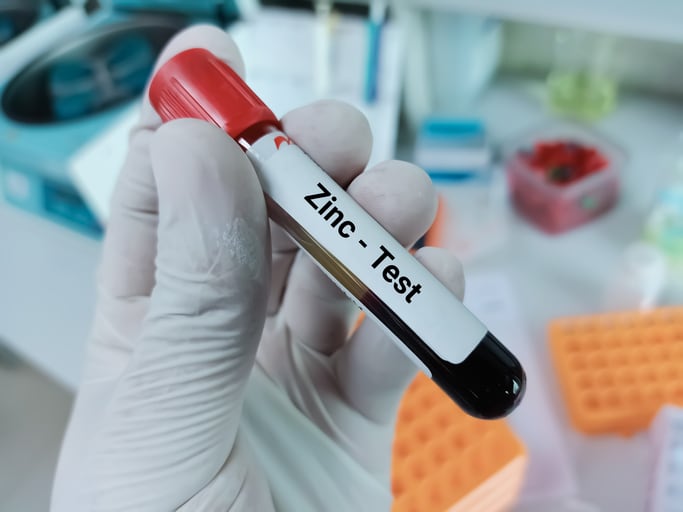An estimated 17% of the global population is at risk of inadequate zinc intake, and prevalence is likely to increase as the cost of-living-crisis takes hold and environmental shifts impact crop nutrition, according to a new review published in the journal Advances in Nutrition.
The researchers, from across the UK and the U.S., asserted that of all the micronutrient deficiencies, "that of zinc is the most insidious".
The report aimed to elucidate recent developments in our understanding of zinc’s role in health, the impact of the changing climate, promising novel functional biomarkers and solutions for improving population zinc intake.
Nicola Lowe, professor of nutritional sciences at University of Central Lancashire and lead author, told NutraIngredients that zinc deficiency is becoming more prevalent across the globe as a result of the cost-of-living crisis.
"The ability to purchase high quality food is limited, and more and more people are relying on food banks and high energy, nutrient poor foods," she explained. "This may lead to what we call ‘hidden hunger’, meaning people may look nourished, but there is hidden malnourishment due to reliance on low quality foods."
Health benefits and mechanisms of action
Zinc has catalytic, structural and regulatory roles that are essential to metabolic pathways, gene expression, hormone function, inflammation, immune response and much more making it “vitally important to health and growth across the life course” and essential in reducing the burden of NCDs, the report noted.
Other impacts of severe zinc deficiency in children include cognitive impairment, recurrent infections and diarrhoea, and delayed wound healing while in adolescents and adults, overt zinc deficiency impairs reproduction and leads to an increased risk of cardiometabolic disorders.
The micronutrient plays an important role in insulin secretion and glucose homeostasis, and low status has been associated with more severe type 2 diabetes mellitus. Its status also affects lipid metabolism, including the absorption, synthesis and metabolism of fatty acids, which impacts circulating lipid profiles and may increase risk of cardiovascular disease.
Zinc’s impacts on host immune health are multi-faceted. For example, it impacts T-cell activation—a key action in the immune response needed for the destruction of virus-infected cells and neoplasms.
Zinc is needed for the generation of acids and the concentration of toxic levels of zinc to kill pathogenic bacteria, for the catalytic activity of proteases that disassemble pathogen-derived proteins, and to catalyze the dismutation of cytotoxic superoxide anions generated in host defense.
It has numerous critical roles in metabolic health as it signals pancreatic β-cells to prevent insulin over-release, and zinc-dependent regulation of phosphorylation increases insulin receptor sensitivity.
Essential fatty acid metabolism, important in the regulation of inflammation, is also sensitive to changes in zinc intake. Zinc is a key element in the response to oxidative stress in part through its catalytic role in superoxide dismutase and signalling cellular response to oxidative stress.
Insufficient biomarker
The most frequently used biomarker of zinc status is plasma zinc concentration (PZC), however this fluctuates in an individual by 20% over the course of the day, influenced by the length of overnight fast, the size and composition of the previous meal, and inflammation. Even when these factors are controlled, analytical variability occurs, according to the report.
However, several functional biomarkers of zinc—eg. essential fatty acid desaturation, DNA damage and zinc transporter gene expression—have been shown to be more sensitive than PZC to changes in zinc intake, and there is a trend toward their use.
Data from animal models suggest that changes in gut microbiota may be used for the evaluation of zinc status.
Environmental impacts
Experiments have found when crops are grown at elevated atmospheric CO2—at levels projected for 2050—there is a decline in the zinc concentrations in the grains of many staple cereal crops.
This carbon “nutrient penalty” has been projected to decrease the global availability of dietary zinc by 14.6% (and 13.6% for iron) by 2050.
The authors noted it is essential to consider strategies to improve zinc bioavailability from food to enhance net zinc absorption and utilization.
The report zeroed in on large-scale fortification with zinc through “preharvest” biofortification—essentially the selection of crop varieties based on their ability to maximise nutrient content—as a minimal risk and cost-effective approach for industrially produced staple foods and condiments.
Supplemental zinc
The chemical form of zinc used in supplements may be inorganic (e.g., sulfate, oxide, or citrate), organic (e.g., gluconate or malate), or zinc complexed to amino acids (e.g., histidine or lysine).
The authors noted that systematic reviews and meta-analyses of zinc supplementation in children and adults have demonstrated the effectiveness of this approach in increasing PZC in adults and functional outcomes in children five years and younger, including height, weight, and weight-for-age and weight-for-length.
But they noted some difficulties with supplementation. The chemical form has an impact on the solubility and absorption, and the consumption of certain foods and drink prior, during and post supplementation also impact its bioavailability. For example, phytic acid (PA), a substance found in many plant seeds, negatively affects zinc bioavailability.
The authors warned that preventive supplementation “is not economically or logistically viable in most LMICs” as demonstrated by the lack of progress in scaling the high impact World Health Organization and the United Nations Children’s Fund joint guideline for supplementation for diarrhoea management and by the limited effectiveness of iron supplementation strategies in children and females of childbearing age.
"Increasing zinc intake and combating global zinc deficiency requires context-specific strategies and a combination of complementary, evidence-based interventions, including supplementation, food fortification, and food and agricultural solutions such as biofortification, alongside efforts to improve zinc bioavailability," they wrote.
"Enhancing dietary zinc content and bioavailability through zinc biofortification is an inclusive nutrition solution that can benefit the most vulnerable individuals and populations affected by inadequate diets to the greatest extent."
Source: Advances in Nutrition
doi: 10.1016/j.advnut.2024.100181
“Preventing and Controlling Zinc Deficiency Across the Life Course: A Call to Action”
Authors: N.M Lowe et al.


